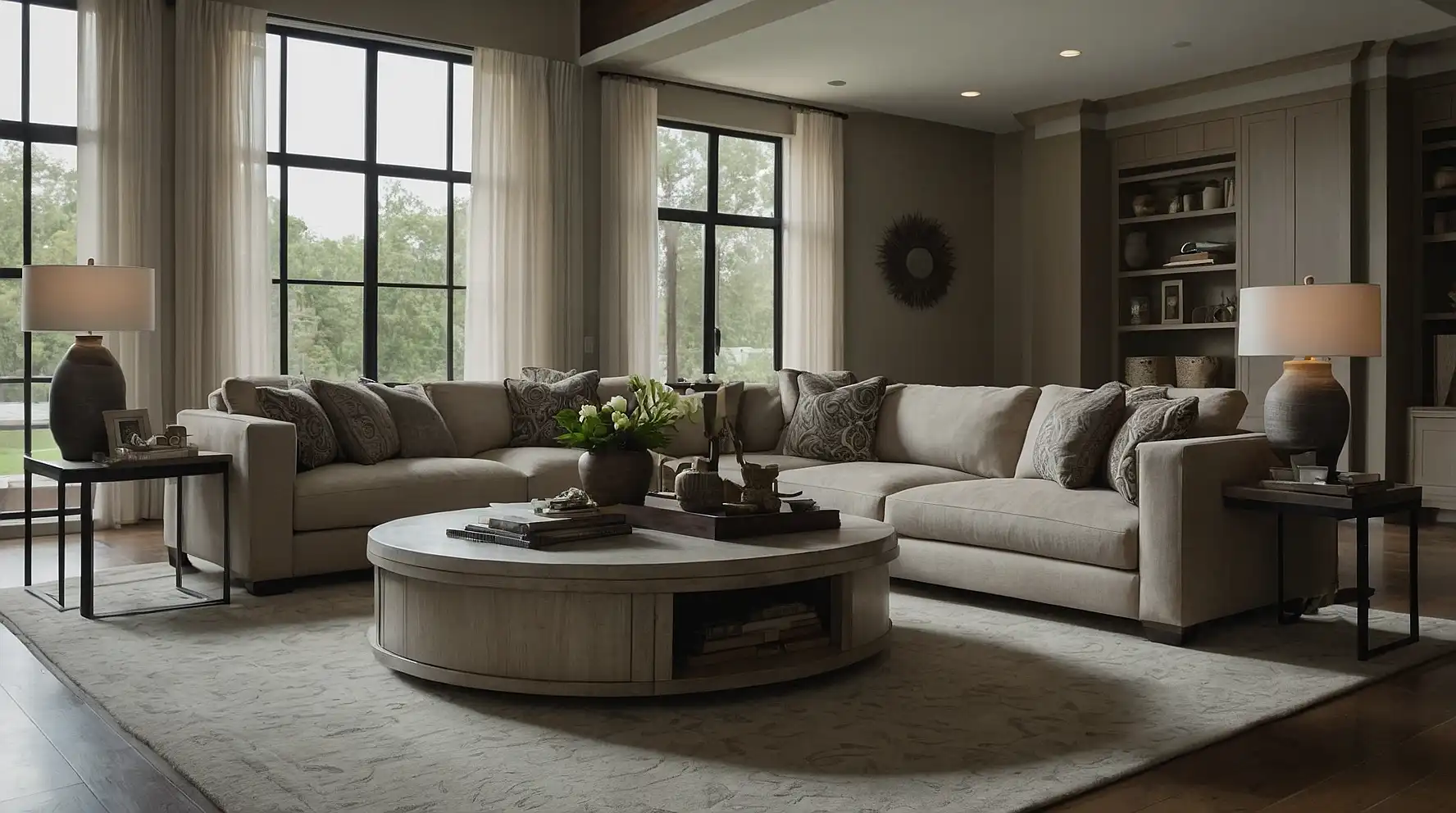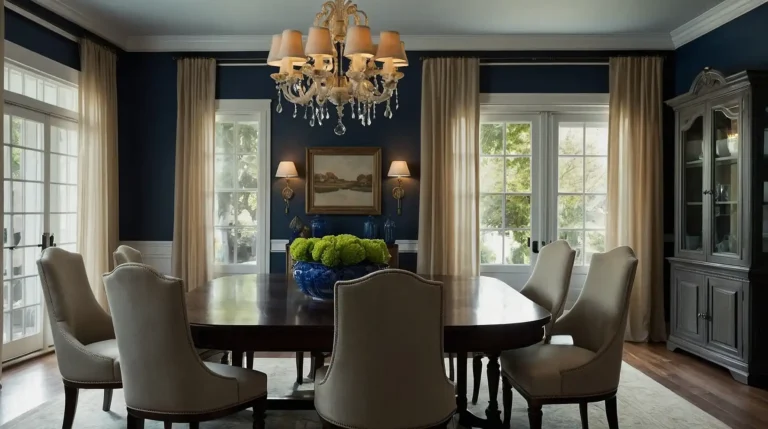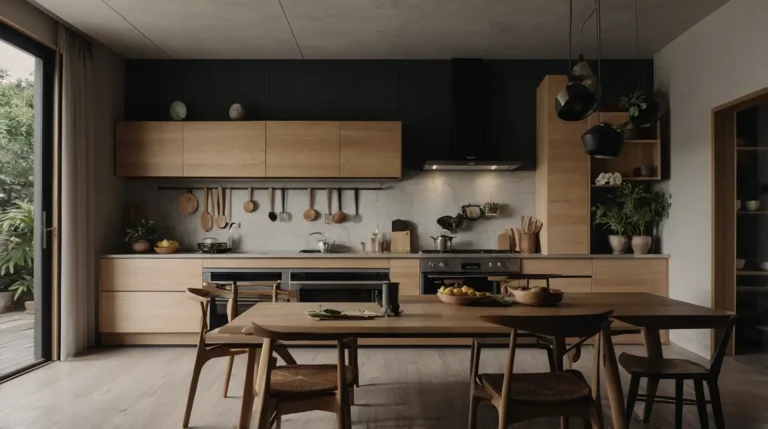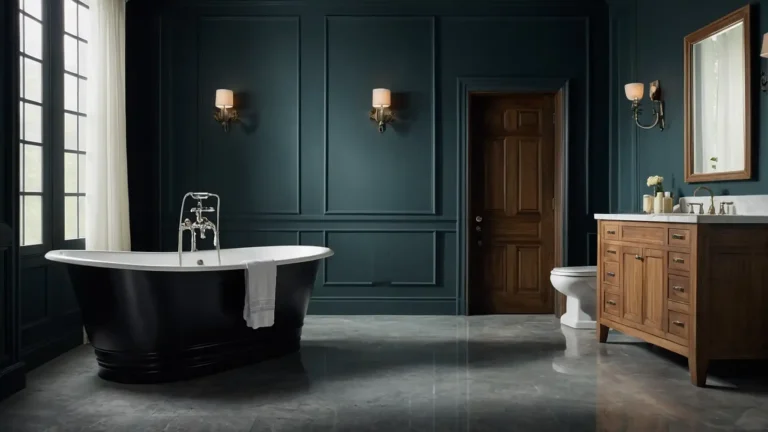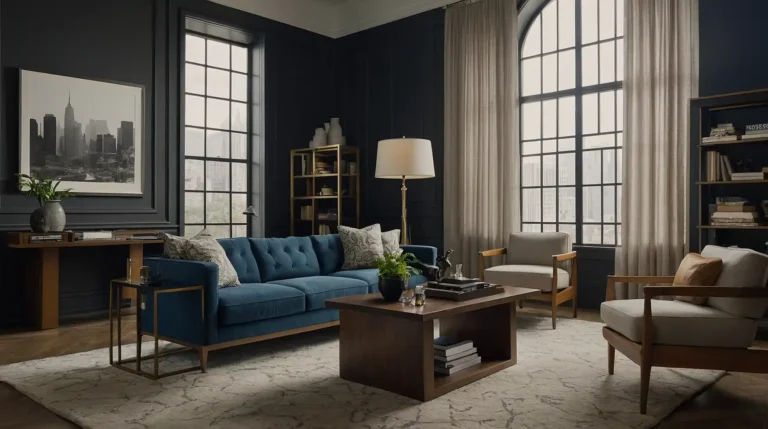21 Neutral Living Room Ideas
Create a timeless, sophisticated living room using neutral colors that never go out of style. These calming palettes provide the perfect foundation for any decorating approach.
You’ll discover how neutral doesn’t mean boring when you layer textures, materials, and subtle color variations. These spaces feel both elegant and inviting.
Neutral living rooms adapt easily to seasonal changes and evolving tastes. You can refresh the look with simple accessory swaps throughout the year.
1: Warm Beige Foundation
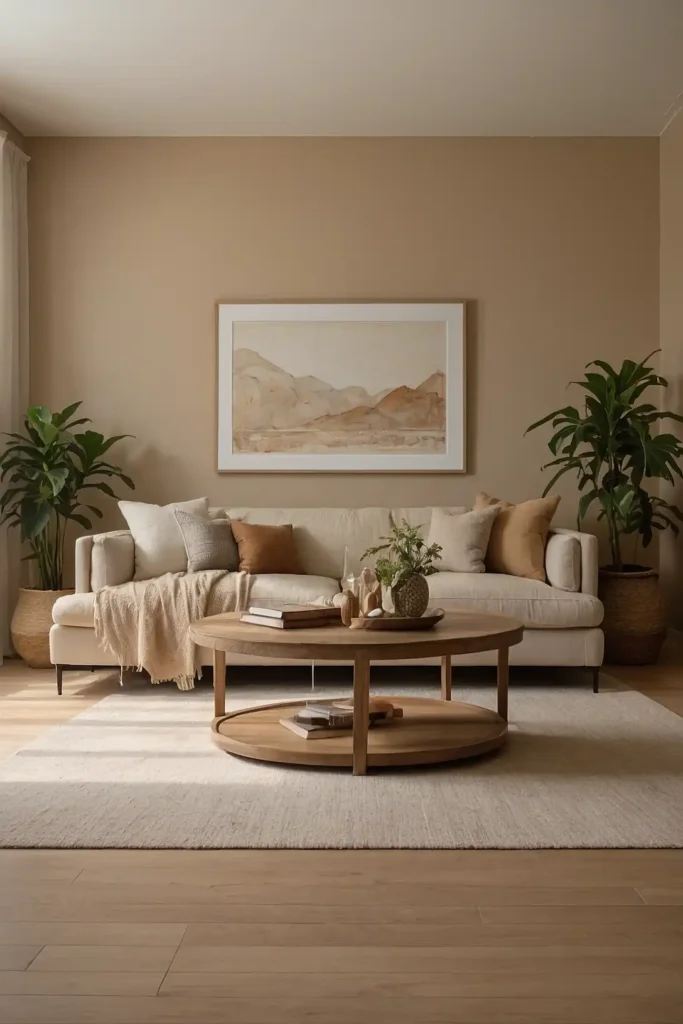
Build your room around warm beige walls that create cozy, inviting atmosphere. This versatile shade complements both traditional and contemporary furniture styles beautifully.
Layer different beige tones through furniture, textiles, and accessories for depth. Add cream and taupe accents to prevent the space from feeling flat.
Beige reflects natural light effectively while providing sophisticated backdrop for artwork. This timeless choice creates spaces that feel both current and enduring.
2: Cool Gray Sophistication
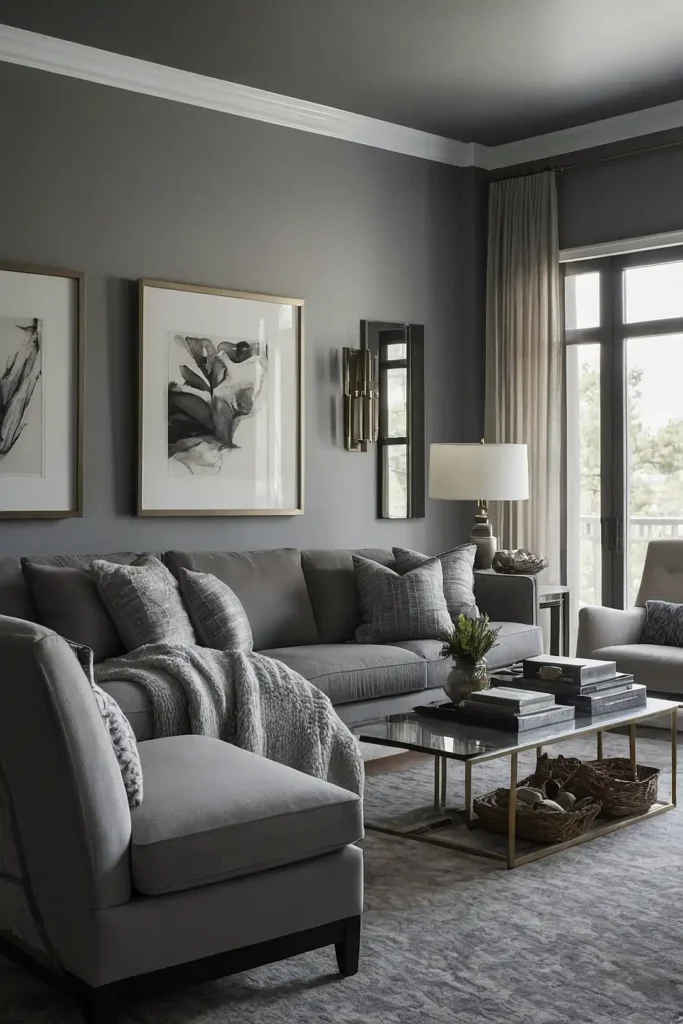
Embrace cool gray tones that bring modern elegance to any living space. Gray provides contemporary feel while remaining neutral enough for various decorating approaches.
Mix charcoal, dove gray, and silver accents throughout furniture and accessories. Add white elements to brighten the palette and prevent heaviness.
Gray works especially well in rooms with abundant natural light sources. This sophisticated approach creates gallery-like backdrops for colorful artwork and plants.
3: Crisp White Minimalism
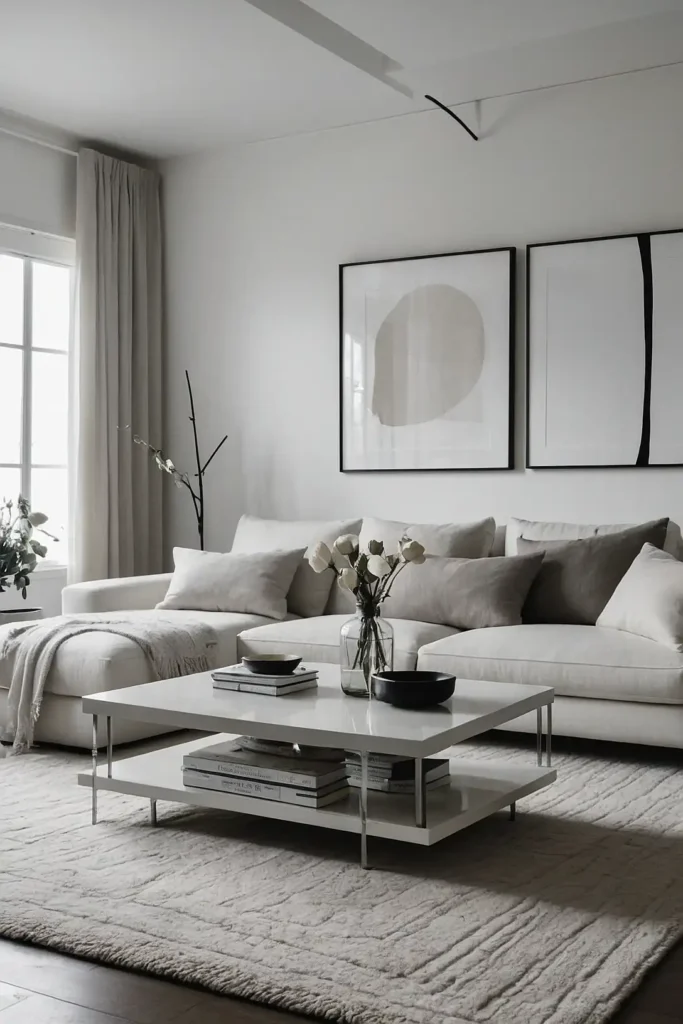
Design around pure white walls and furniture for clean, minimalist aesthetic. White maximizes natural light while creating sense of spaciousness and calm.
Layer different white shades like ivory, cream, and pearl for visual interest. Add natural wood accents to warm the stark palette appropriately.
White spaces require careful attention to texture and lighting for success. This approach works beautifully in modern, Scandinavian, and coastal design styles.
4: Natural Linen Textures
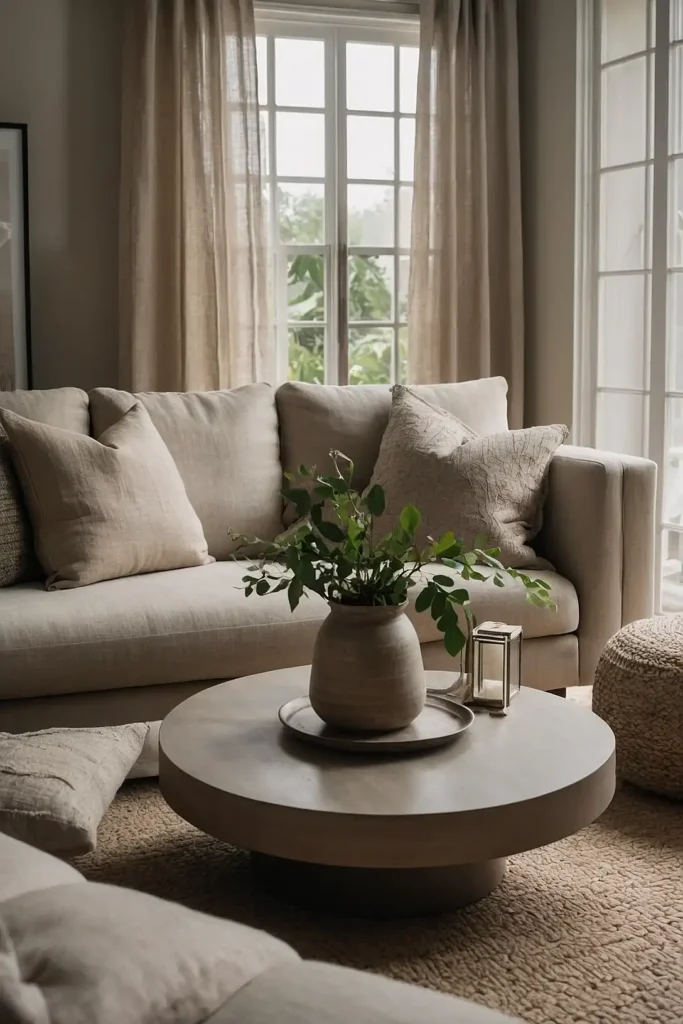
Incorporate linen upholstery and window treatments for relaxed, organic feel. Linen’s natural texture adds visual interest while maintaining neutral color schemes.
Choose linen in oatmeal, flax, or natural tones that complement your palette. Mix with cotton and wool textiles for varied tactile experiences.
Linen ages beautifully and develops character with use over time. This natural material creates lived-in comfort that feels both casual and sophisticated.
5: Layered Neutral Rugs
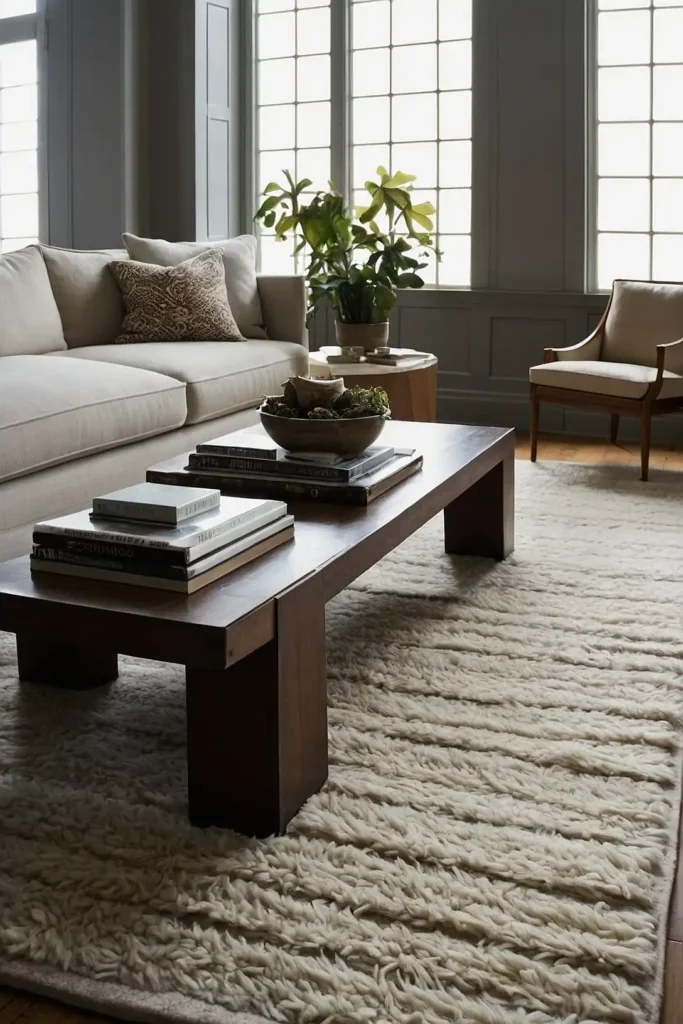
Combine multiple rugs in coordinating neutral tones for depth and definition. Layer smaller rugs over larger ones to create visual zones within spaces.
Choose rugs with different textures like jute, wool, and cotton blends. Vary patterns subtly with geometric designs or natural weaves.
Layered rugs add warmth underfoot while defining conversation areas effectively. This technique works especially well in open-plan living spaces.
6: Mixed Natural Materials
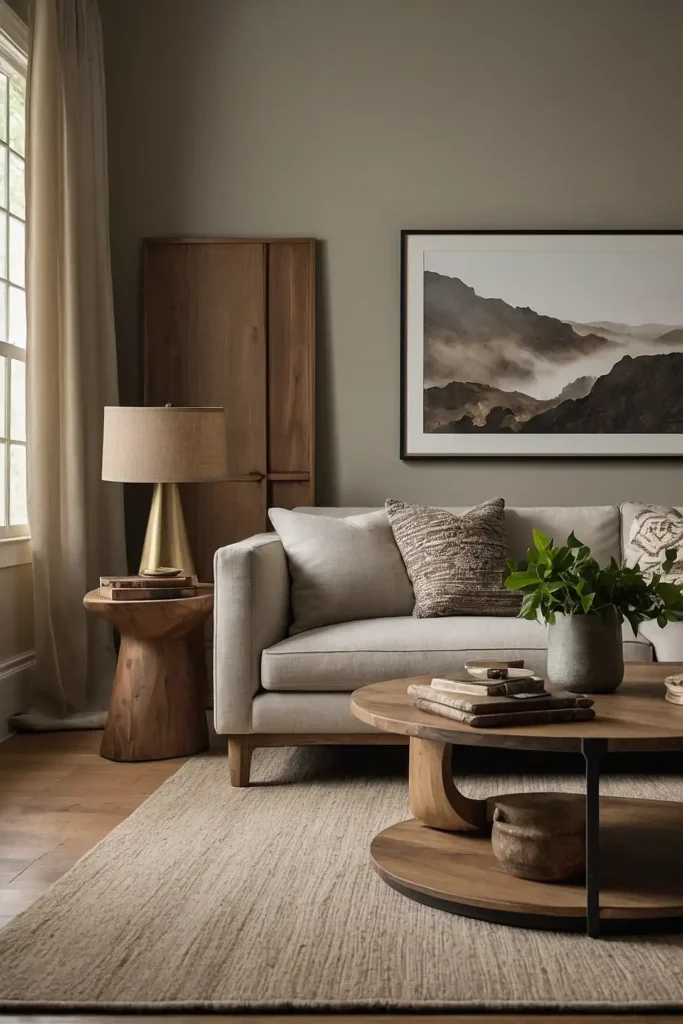
Blend wood, stone, and metal elements throughout your neutral living room. These organic materials add texture while maintaining cohesive color schemes.
Combine reclaimed wood furniture with stone accents and brass hardware. Each material contributes unique character while supporting neutral foundations.
Natural materials age gracefully and develop patina that enhances their beauty. This approach creates spaces that feel grounded and authentically comfortable.
7: Subtle Pattern Integration
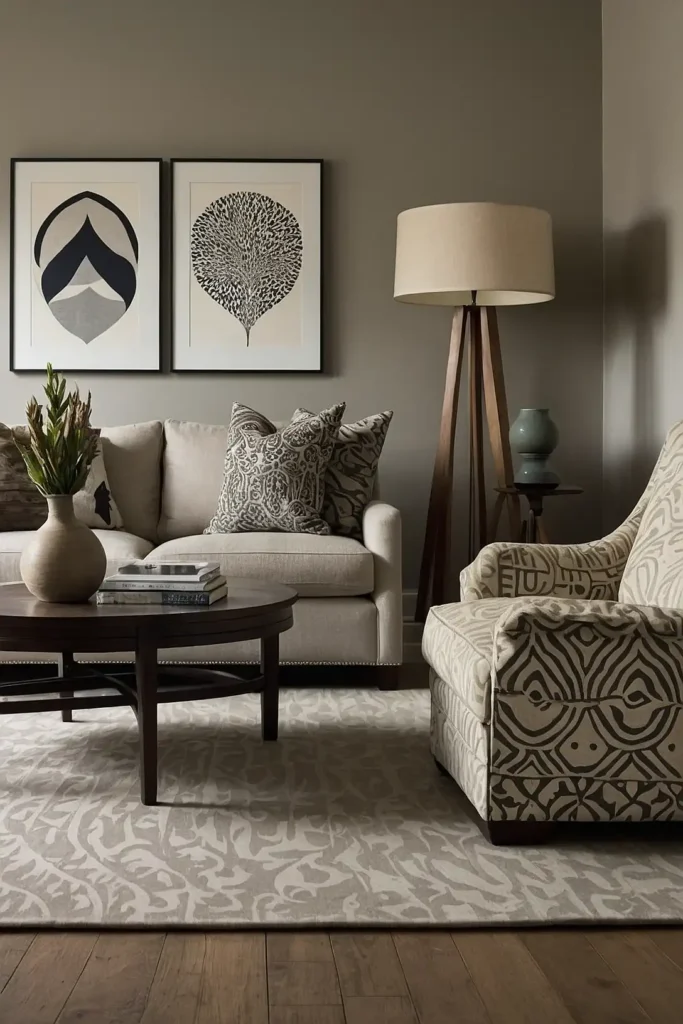
Add interest through subtle patterns in similar neutral tones throughout textiles. Choose geometric designs, stripes, or organic motifs that complement your palette.
Mix pattern scales by combining large florals with small geometrics carefully. Keep colors within your established neutral range for cohesion.
Patterns prevent neutral rooms from feeling bland while maintaining sophisticated restraint. This technique adds visual movement without overwhelming the space.
8: Statement Neutral Furniture
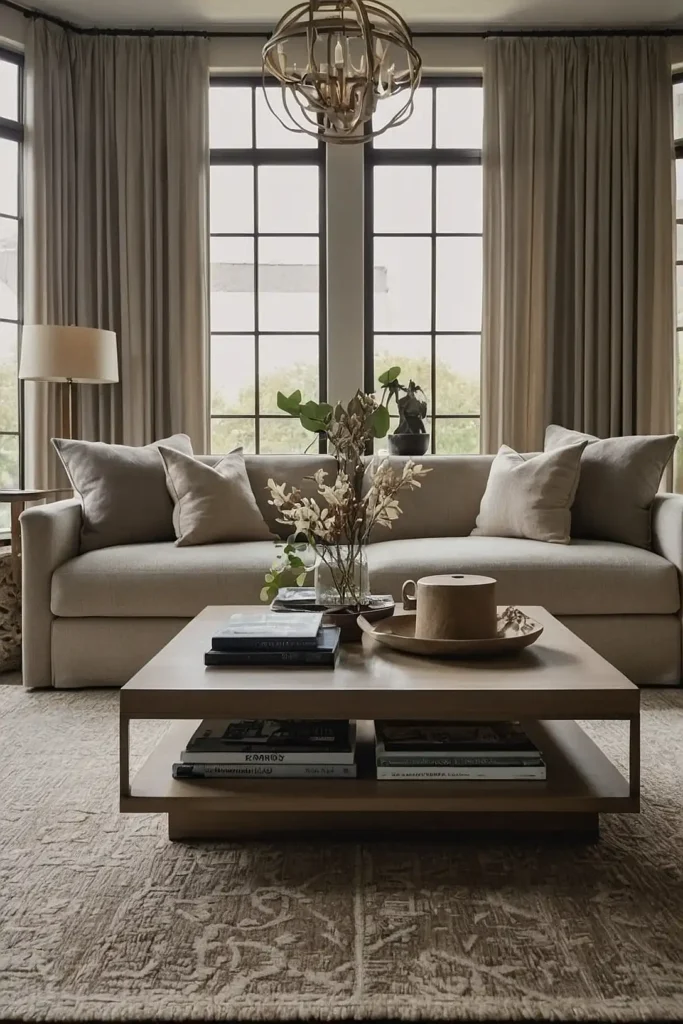
Select furniture pieces in rich neutral tones that serve as focal points. Choose camel leather sofas, charcoal velvet chairs, or cream linen sectionals.
Invest in quality pieces with interesting shapes or luxurious materials. These substantial elements anchor neutral schemes while providing comfort.
Statement furniture in neutral tones provides longevity and versatility for changing décor. This approach balances visual interest with timeless appeal.
9: Warm Wood Accents
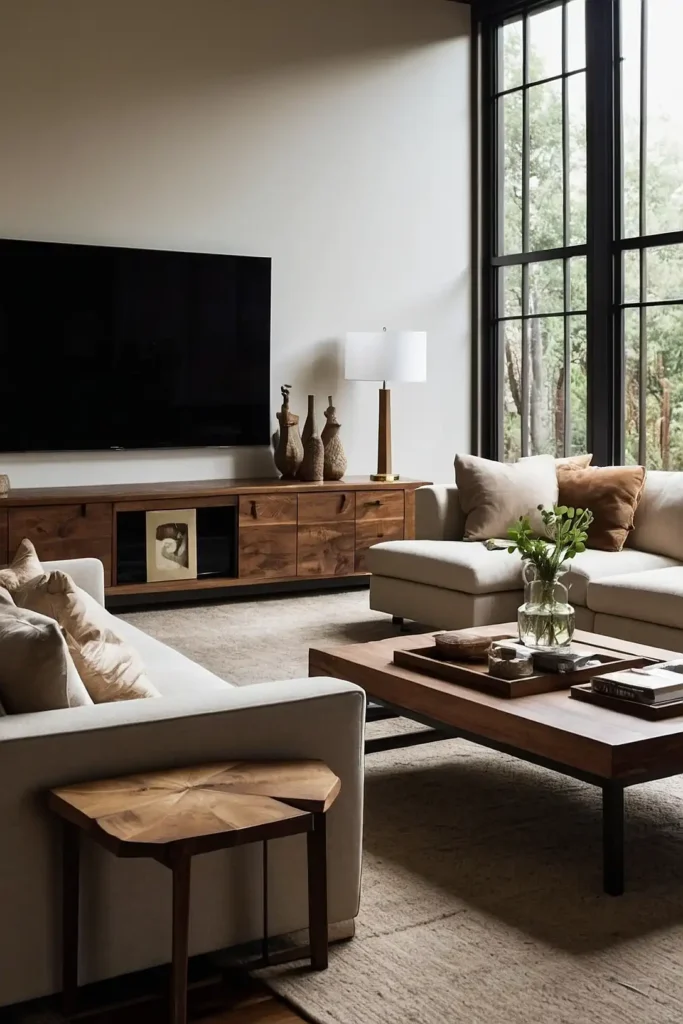
Incorporate honey-toned wood elements that add warmth to cool neutral palettes. Choose oak, pine, or birch furniture and architectural details.
Mix wood tones thoughtfully by staying within warm or cool families. Add wood through flooring, beams, furniture, and decorative accessories.
Wood brings natural beauty and organic texture to neutral schemes effectively. These elements prevent sterile feelings while maintaining sophisticated restraint.
10: Textural Wall Treatments
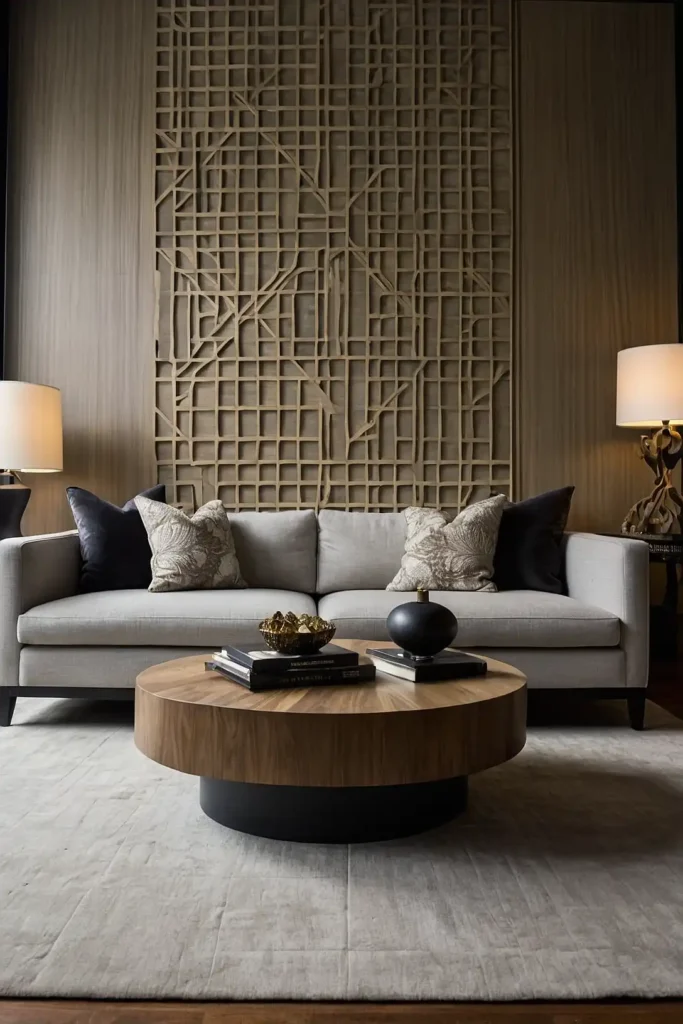
Create visual interest using textural wall treatments like grasscloth or linen wallpaper. These subtle patterns add depth without overwhelming neutral palettes.
Choose treatments in your established color range for seamless integration. Consider accent walls rather than entire rooms for balanced impact.
Textural walls provide sophisticated backdrop for furniture and artwork displays. This approach adds luxury and visual weight to otherwise simple spaces.
11: Monochromatic Schemes
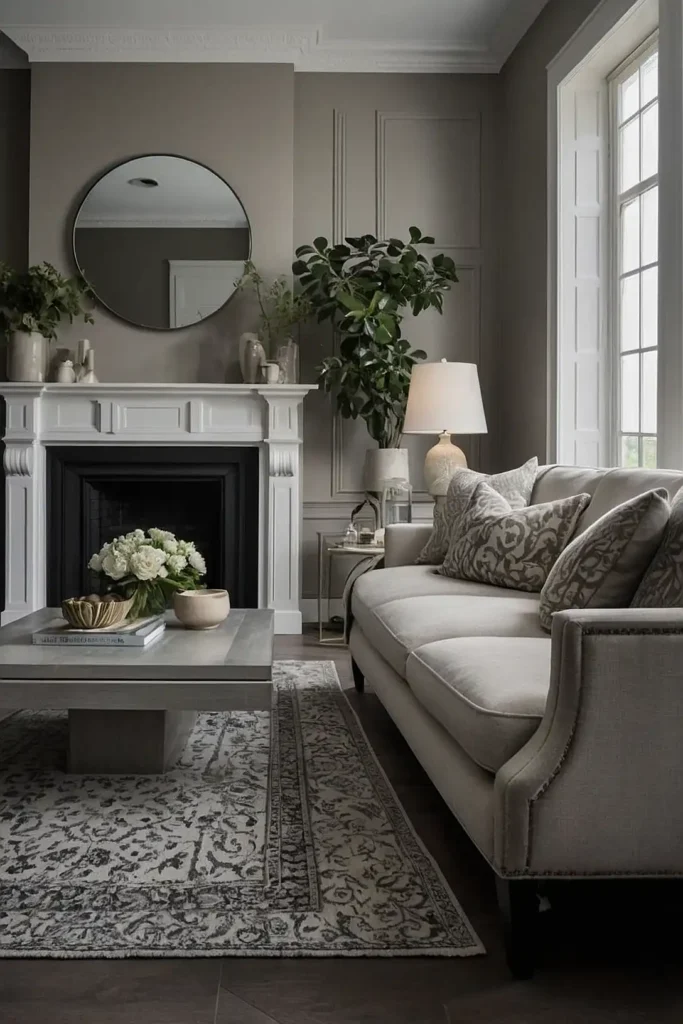
Design entire rooms using variations of single neutral colors for sophisticated unity.
Layer glossy and matte finishes within your chosen color family. Add metallic accents in coordinating tones for subtle glamour and light reflection.
Monochromatic schemes create calming, cohesive environments that feel professionally designed.
Choose different shades, tints, and tones of gray, beige, or white. This approach demonstrates sophisticated understanding of color theory.
12: Cozy Throw Collections
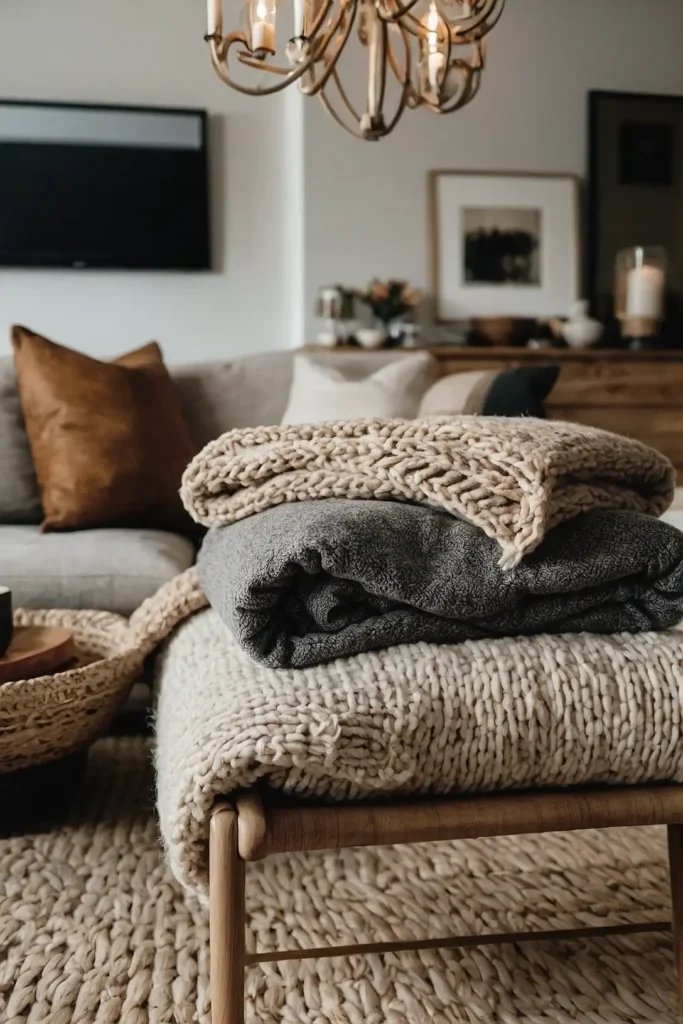
Gather throws and blankets in various neutral textures for comfort and style. Drape them casually over sofas, chairs, and ottomans for inviting appearance.
Choose materials like cashmere, wool, cotton, and faux fur combinations. Vary textures while maintaining consistent color temperatures throughout the collection.
Throws add instant coziness while allowing easy seasonal updates and changes. This approach encourages relaxation while maintaining design sophistication.
13: Natural Light Maximization
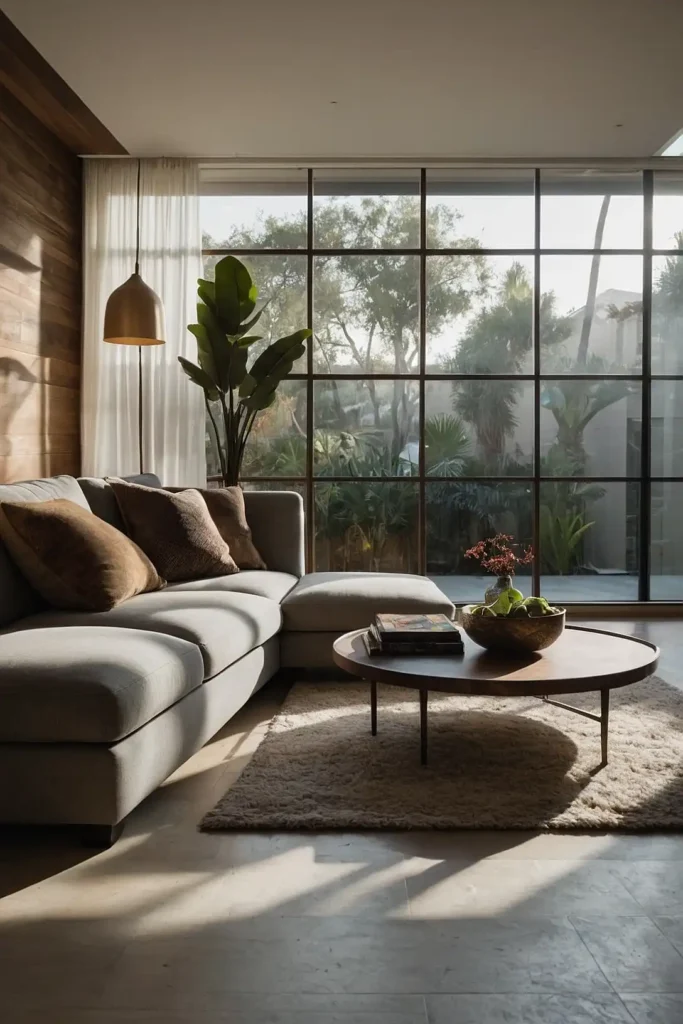
Enhance natural light using mirrors, light window treatments, and reflective surfaces. Position mirrors opposite windows to bounce light throughout neutral spaces.
Choose sheer curtains or light-filtering blinds that maintain privacy without blocking illumination. Light colors reflect available light more effectively than dark alternatives.
Natural light brings neutral palettes to life while creating dynamic shadows. This approach reduces reliance on artificial lighting during daytime hours.
14: Gallery Wall Displays
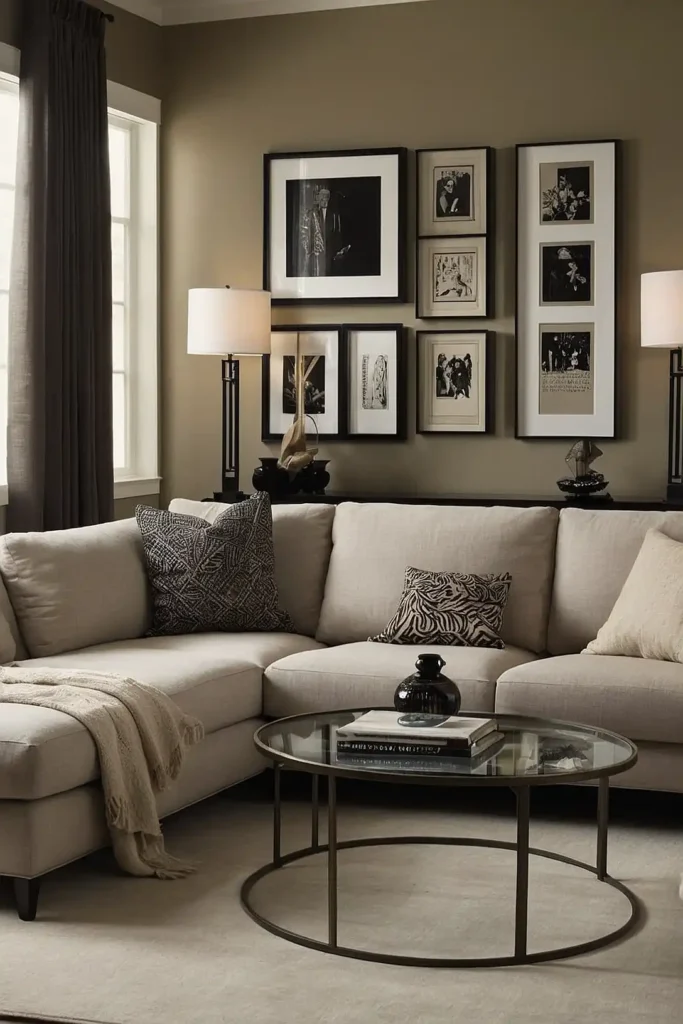
Create curated gallery walls using black and white photography or neutral artwork. Frame pieces consistently for cohesive presentation that complements neutral backgrounds.
Mix different sizes and orientations while maintaining consistent matting and framing. Choose artwork that enhances rather than competes with your palette.
Gallery walls add personality to neutral rooms without introducing disruptive colors. This approach allows personal expression within restrained color schemes.
15: Plush Pillow Arrangements
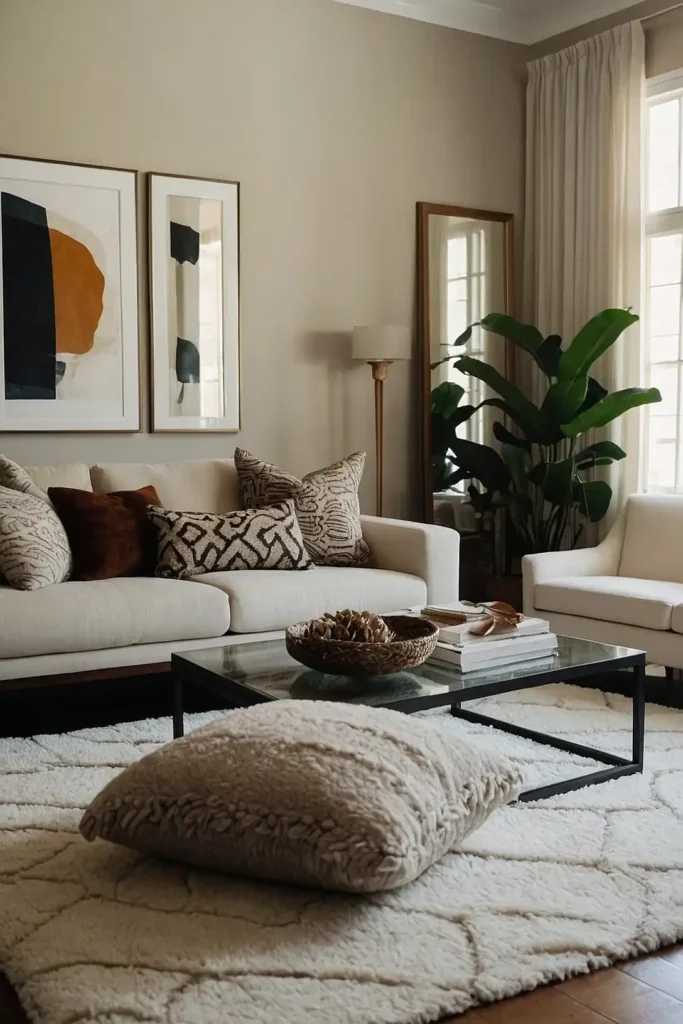
Layer pillows in various neutral tones and textures across seating areas. Mix sizes, shapes, and materials for dynamic yet cohesive arrangements.
Choose pillows with subtle patterns, embroidery, or interesting textures like bouclé. Arrange odd numbers for natural, unstudied appearances.
Pillow arrangements provide easy opportunities for seasonal updates and refreshing. This approach adds comfort while contributing to overall design sophistication.
16: Industrial Metal Accents
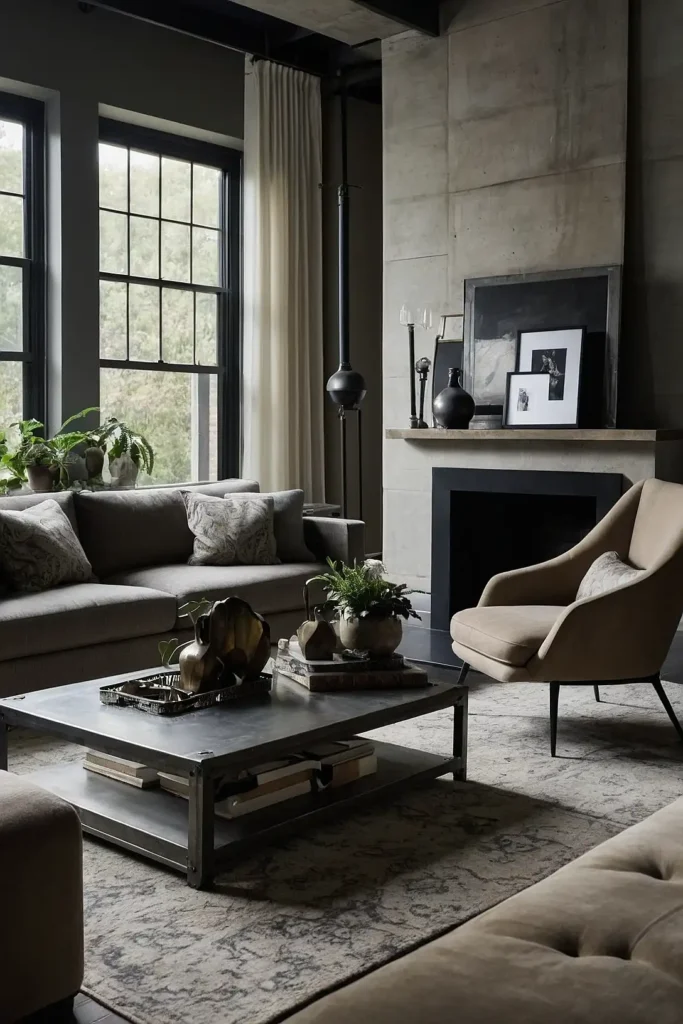
Incorporate aged brass, brushed nickel, or matte black metal elements throughout. These industrial touches add edge to soft neutral palettes effectively.
Add metal through lighting fixtures, hardware, furniture legs, and decorative accessories. Choose one metal family for consistency and professional appearance.
Metal accents provide necessary contrast against soft neutral textiles and colors. This approach prevents spaces from feeling too feminine or overly soft.
17: Organic Shape Integration
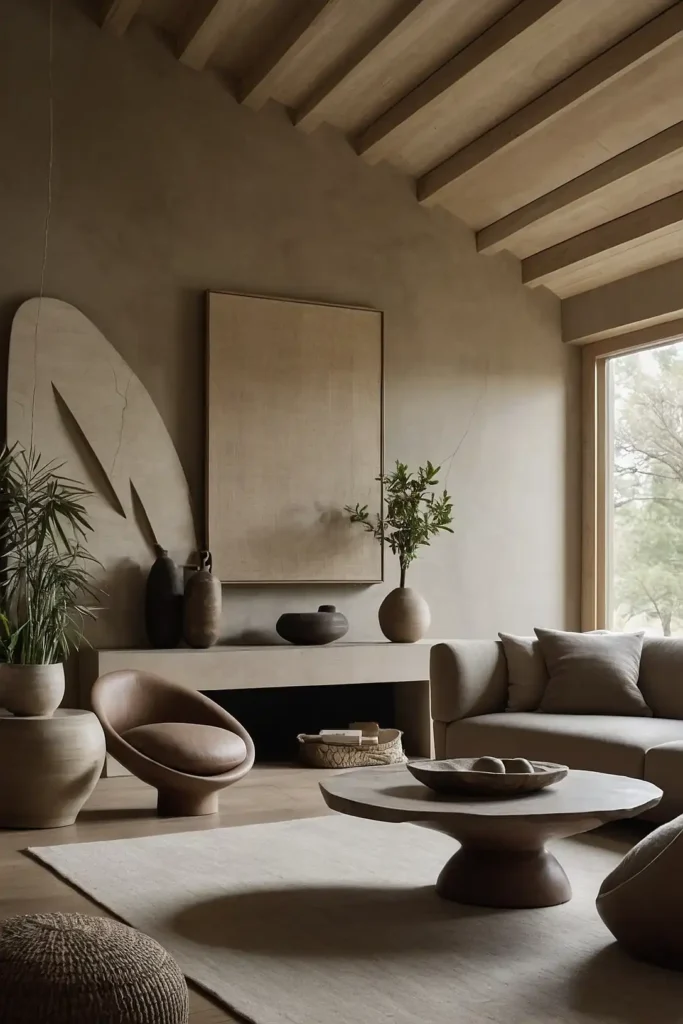
Include furniture and décor with curved, organic shapes that soften neutral schemes. Choose round coffee tables, curved sofas, or oval mirrors.
Balance geometric and organic shapes throughout the space for visual interest. Organic forms create movement and flow within structured room layouts.
Curved elements add sculptural quality while maintaining neutral color schemes successfully. This approach creates sophisticated contrast against architectural straight lines.
18: Seasonal Neutral Updates
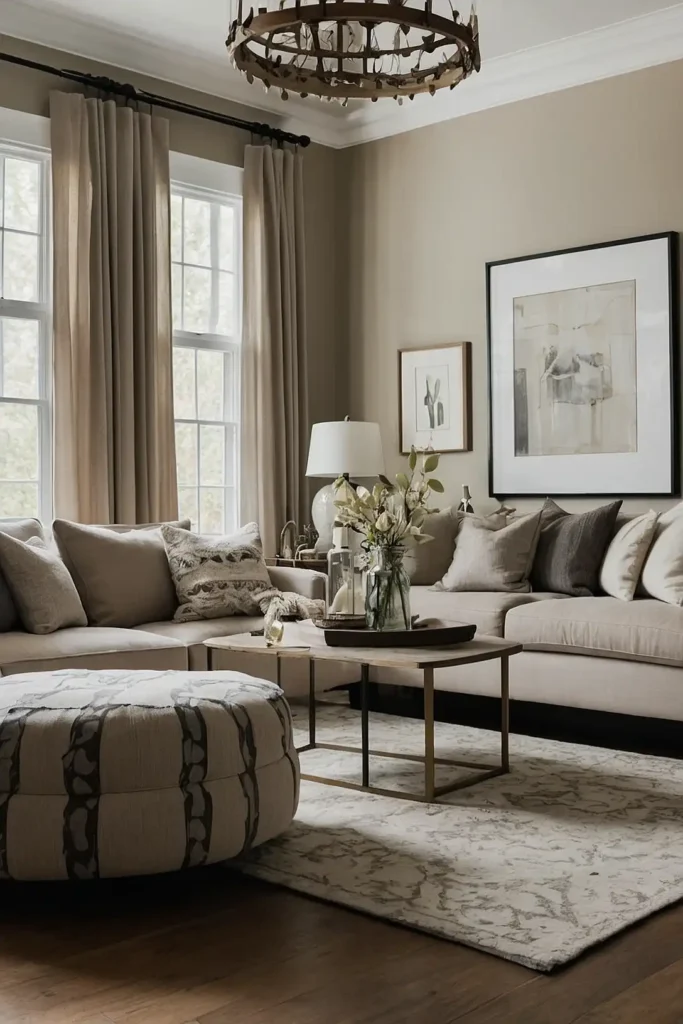
Refresh neutral rooms seasonally using different textures and materials within palettes. Add velvet in winter, linen in summer, while maintaining colors.
Swap accessories like candles, flowers, and books to reflect seasonal changes. Choose seasonal elements in coordinating neutral tones for seamless integration.
Seasonal updates keep neutral rooms feeling fresh and current throughout years. This approach provides variety while maintaining established design foundations.
19: Comfortable Floor Seating
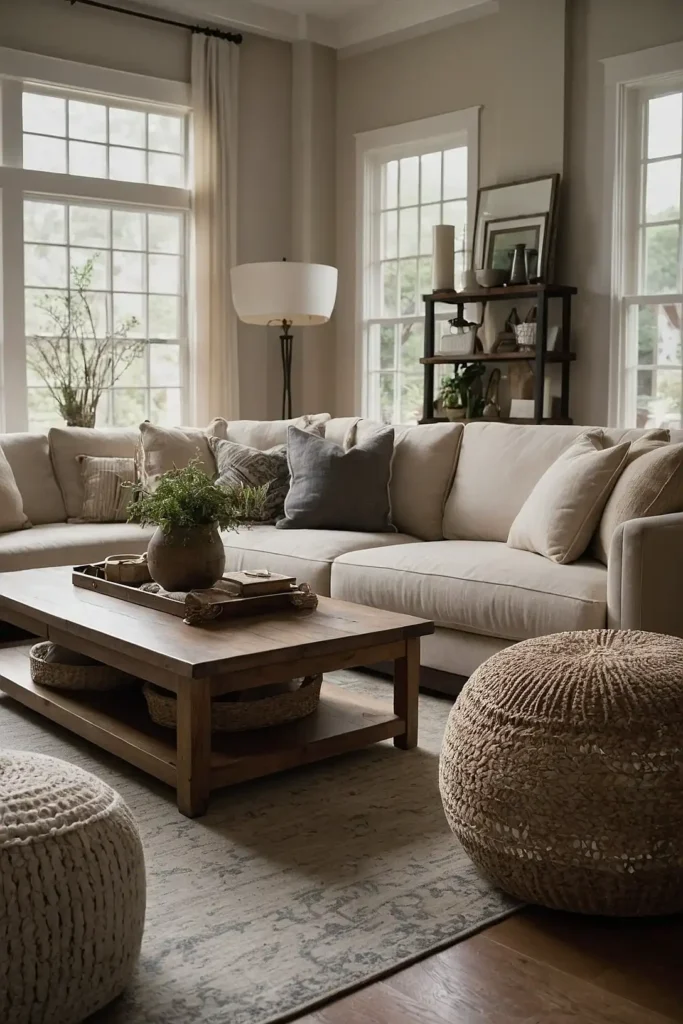
Create relaxed gathering areas using floor cushions and low seating in neutral tones. This approach encourages informal conversation and family interaction.
Choose durable fabrics that withstand regular use while maintaining visual appeal. Add support pillows and throws for enhanced comfort during extended use.
Floor seating adds casual comfort while accommodating larger groups during entertaining. This approach works especially well in family rooms and media spaces.
20: Built-in Storage Integration
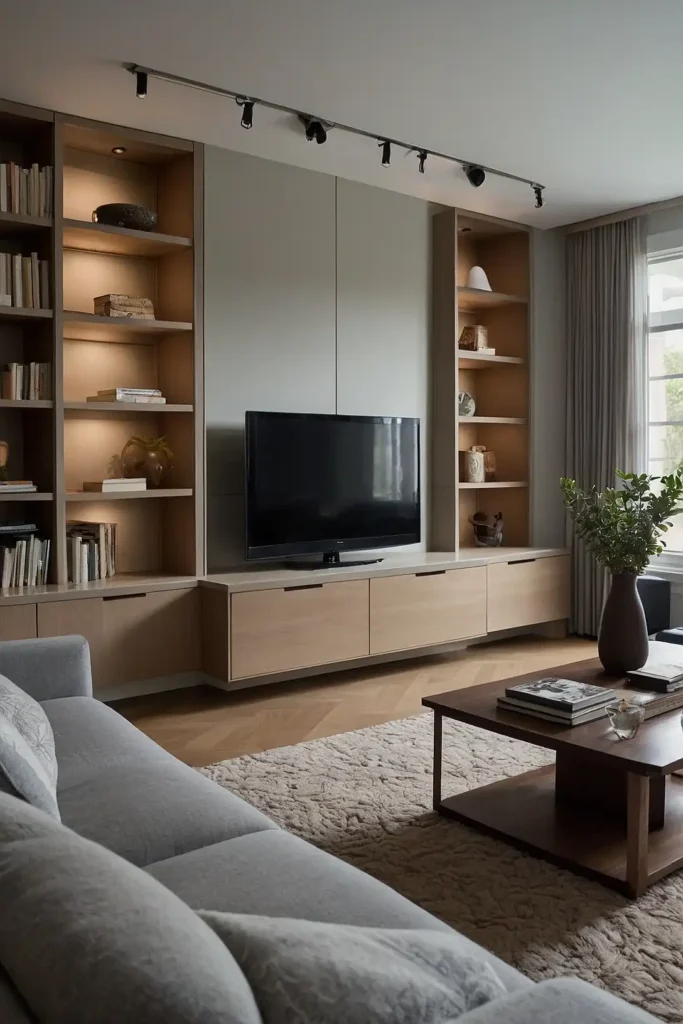
Design custom storage solutions in neutral tones that blend seamlessly with walls. Built-ins provide function while maintaining clean, uncluttered appearances.
Paint storage units in matching wall colors for invisible integration. Include both open and closed storage for displaying and hiding items.
Built-in storage maximizes function while supporting minimalist neutral aesthetics effectively. This approach creates custom, high-end appearances at reasonable costs.
21: Neutral Plant Displays
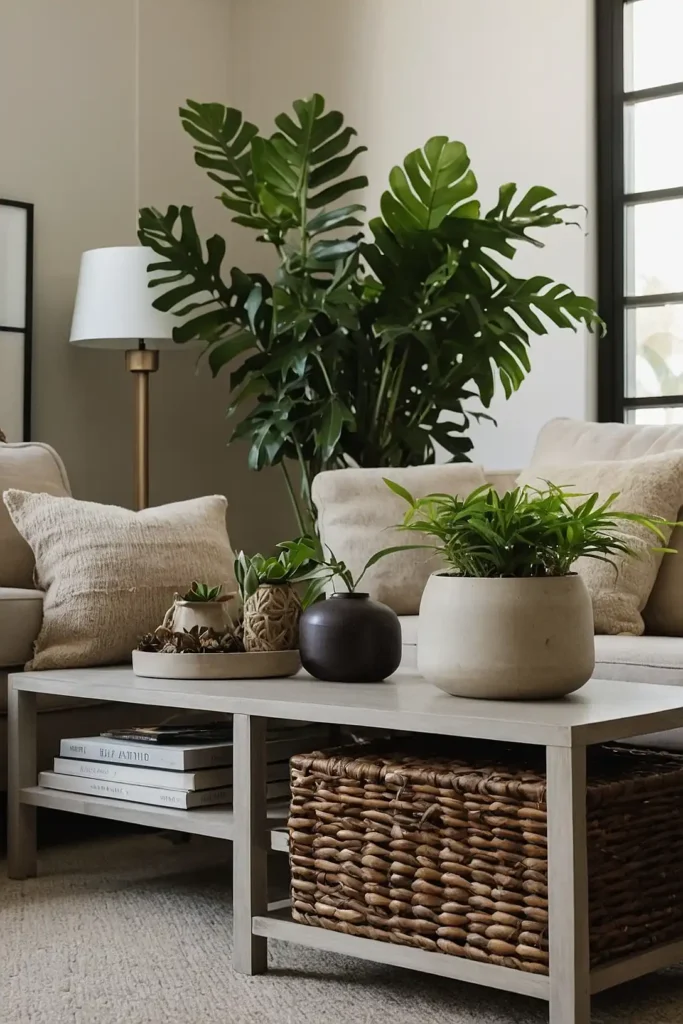
Add living plants in neutral containers that complement your established palette. Choose planters in white, cream, concrete, or natural materials.
Select plants with interesting foliage shapes and textures for visual appeal. Group plants at different heights for dynamic, natural arrangements.
Plants bring life and natural color to neutral schemes without disrupting palettes. This approach adds freshness while maintaining sophisticated restraint and balance.
Conclusion
These neutral living room ideas create sophisticated, timeless spaces that adapt beautifully to changing styles and personal preferences.

